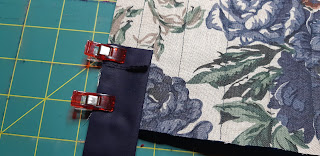In an effort to get my Little Miss to eat better I'm trying to re-create some of her favourite less than healthy meals as healthy batch cooked versions. This meatball recipe was a huge success, she eats every bite and usually asks for seconds.
I made a whopping 27 servings for just £8.33, that's just 31p per serving. It took a little more time and effort to prepare than many of my other recipes but the extra effort was well worth it.
Ingredients and Tools:
2kg Beef Mince £5.96
3 Tins Chopped Tomatoes 84p
1kg Onions 50p
Tomato Puree 31p
Passata 32p
3 Eggs 24p
Garlic 16p
Stale Bread
Parsley
Oregano
Total = £8.33
Makes 27 servings = 31p per serving
Food purchased from Aldi
Mince the garlic.
And dice the onions.
Fry them until soft.
Then add them to the slow cooker along with the tomatoes.
Finely chop the oregano and add it to the slow cooker.
Add the passata and cook on low for about 3 hours or longer if it's convenient.
For the meatballs crumb the bread with a food processor.
Mix the breadcrumbs with the mince.
Add the tomato puree, egg and parsley.
Mix until well combined.
Form into balls.
The meatballs can be frozen raw and oven cooked after defrosting.
Or they can be oven cooked for about 25 minutes then cooled and frozen cooked ready to be microwaved after defrosting.
Blend the sauce until smooth.
If freezing the meatballs cooked they can be frozen in the same tub as the sauce.
You can freeze the raw meat balls and sauce separately or alternatively freeze them together in an oven proof container and oven cook them both at the same time (after defrosting).
We like it sprinkled with grated cheese.
Linking Up To:
Here are some of my other batch cook mince recipes:
#simplycrafting #homecooking #budgterecipe #batchcooking #mealprep #slowcookerrecipe #healthyeating #healthyeatingideas #healthyeatingforlife #healthyeatingonabudget #healthycooking #healthyrecipe






























































